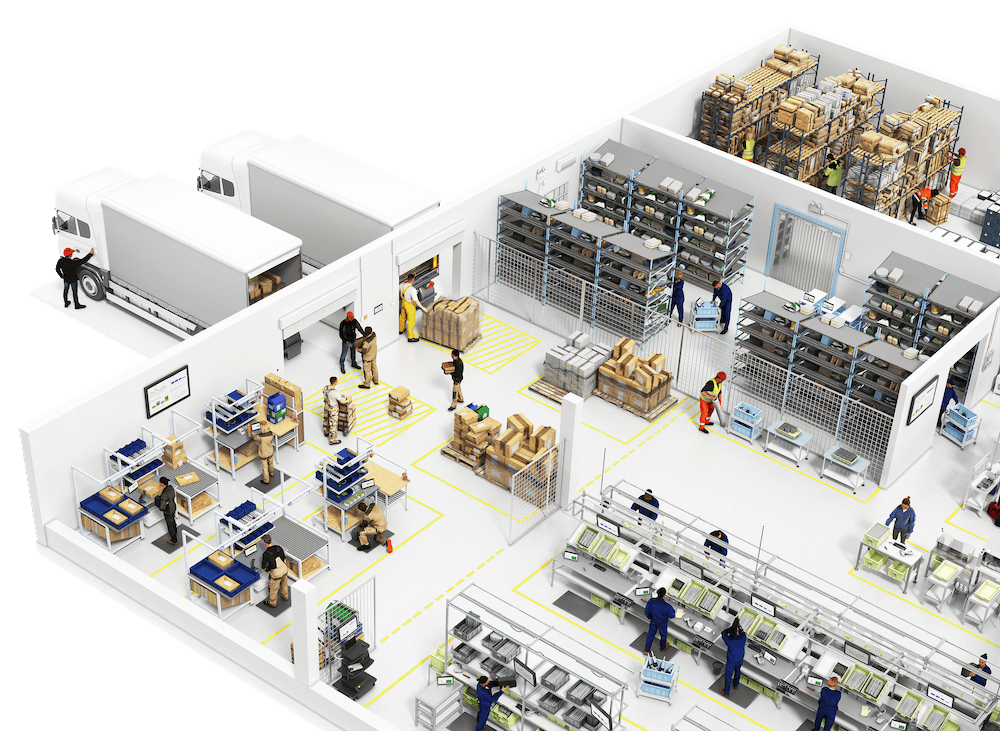What is Quality 4.0?
Does the number 4.0 sound familiar to you? That’s probably because of Industry 4.0. Quality 4.0 is just the extension of this new technological paradigm into quality activities.
Alongside the emerging capabilities of Industry 4.0 — smart factory, autonomous systems, IoT, and Machine learning — Quality 4.0 aims to leverage new technologies to mobilize the practice of quality management and organizational excellence. The focus of Quality 4.0 is to lower costs, improve quality, ease compliance, and increase the efficiency of quality operations. The most innovative groups are rethinking how we do quality management in the digital era.
Here is a chart of how each successive industrial revolution pairs up with quality management innovations.
| 1.0 | 2.0 | 3.0 | 4.0 | |
|---|---|---|---|---|
| Enabling Technology | Steam Power | Electricity | ICTs Electronics | Cyber Physical Systems, Internet of Things (IoT), Networks |
| Production Change | Mechanical Production | Mass Production and Assembly Lines | Automation and Networked Production | Intelligent, Flexible, Distributed Production |
| Quality | Self-instpection | Inspection/ Control/ Assurance/ Military Standards | Software for QMS, Improvement and Planning | Continuous Quality with real-time Data and IoT |
However, it is important to note that although Quality 4.0 may be driven by technology, the true transformation happens in the culture of leadership and quality processes. Quality 4.0 is an improvement on previous quality methods, rather than building one from the ground up.
Quality 4.0 Enabled by Industry 4.0
Data
Data is crucial to continuous improvement. Without the collection and analysis of robust data, it is impossible to form future recommendations and plans for quality improvement. With the help of Industry 4.0’s connected devices, accurate real-time data can be used to empower agile decision-making.
Analytics
Most analytics today is focused around interpreting the data post-collection. However, with Quality 4.0, prescriptive analysis can anticipate when failures or certain actions will occur and suggest appropriate solutions for them.
Connectivity
In Quality 4.0, connectivity means the smooth exchange of information among ERP, product lifecycle management, and the devices used on the shop floor. This connectivity is enabled by IoT gateways, edge devices, and other connecting sensors, providing real-time feedback.
Scalability
The increased capacity to support data volume, users, devices, and analytics can augment the scalability of a company. This means that companies can merge all of their data sources and systems into one place, at a larger scale than possible before.
Management systems
Various Industry 4.0 technologies such as Edge Devices, IoT, and sensors can connect to Digital Quality Management Systems to help companies truly focus on iterating and improving their quality, rather than simply executing it.
Compliance
Especially in life sciences, compliance can be a top priority in quality management. Quality 4.0 can automate and digitize compliance processes and further reduce the total cost of quality.
Quality 4.0 with No-Code Apps
The transition into Quality 4.0 can feel daunting. After all, it is a complete step away from traditional ways of implementing quality practices, and the addition of new technological specs does not make it any easier.
However, no-code apps can ease that process. No-code apps allow you to digitally transform your existing processes, giving you the freedom to customize Quality 4.0 to reflect your current quality management systems and goals, without the requirement of a full-fledged IT team.
Since the goal of Quality 4.0 is to maintain continuous quality with real-time data and IoT, anywhere that data is generated on the shop floor must have some form of IoT-enabled system that collects, stores, and processes data in real-time. But how do you create interfaces that perfectly fit the kinds of data being generated? No-code apps can help. The drag and drop features of apps allow you to quickly roll out interfaces that are needed to perform quality management, as well as make changes to how data is collected as your quality processes evolve.
Not only do no-code apps facilitate the transition into Quality 4.0, but they also bring more flexibility at a lower cost.
Eliminate the source of product defects and reduce your cost of quality with Tulip
Reduce the cost of scrap and rework with apps that help digitize workflows, automate data collection, and improve production efficiency.
